A spring of negligible mass going over a clamped pulley of mass m supports a block of mass M as shown in the figure. The force on the pulley by the clamp at the time of equilibrium is given by
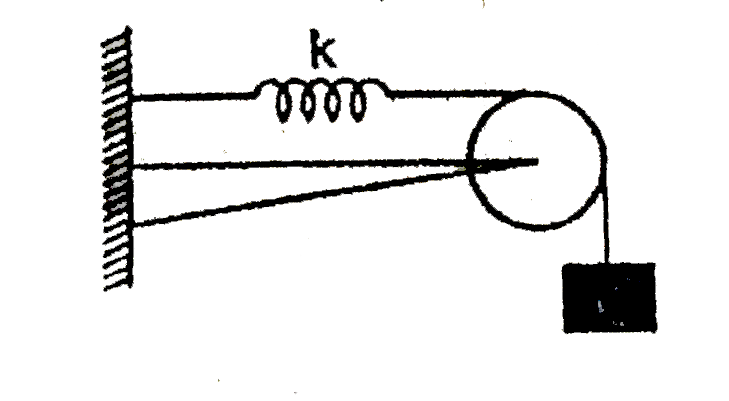
√2Mg
√(mg)2+(kx)2
(√(M+m)2+m2)g
(√(M+m)2+M2)g
The correct Answer is:D
Free body diagram or pulley is shown in figure. Pulley is equilibrium under four forces. Three forces as shown in figure and the fourth, which is equal and opposite to the resultant of these three forces, is the force applied by clamp on the pulley (say F)
R=(√(M+m)2+M2)g

Therefore, the force F is equal and opposite of R as shown in figure.
F=(√(M+m)2+M2g)
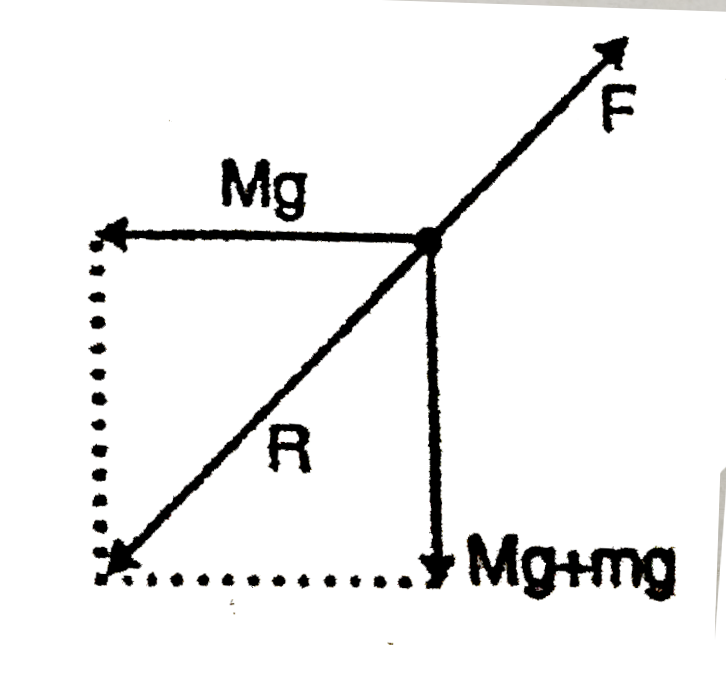
Topper's Solved these Questions
Similar Questions
A mass string going over a clamped pulley of mass m supports a block of mass M as shown in the figure. The force on the pulley by the clamp is given
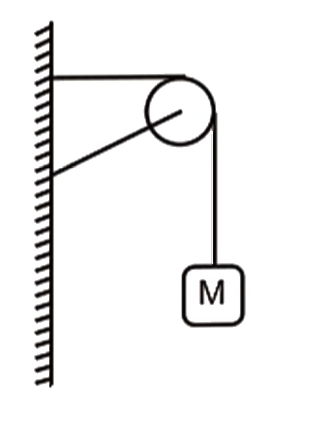 View Solution
View SolutionA block of mass m, lying on a smooth horizontal surface, is attached to a spring (of negligible mass) of spring constant k. The other end of the spring is fixed, as shown in the figure. The block is initally at rest in its equilibrium position. If now the block is pulled withe a constant force F, the maximum speed of the block is :
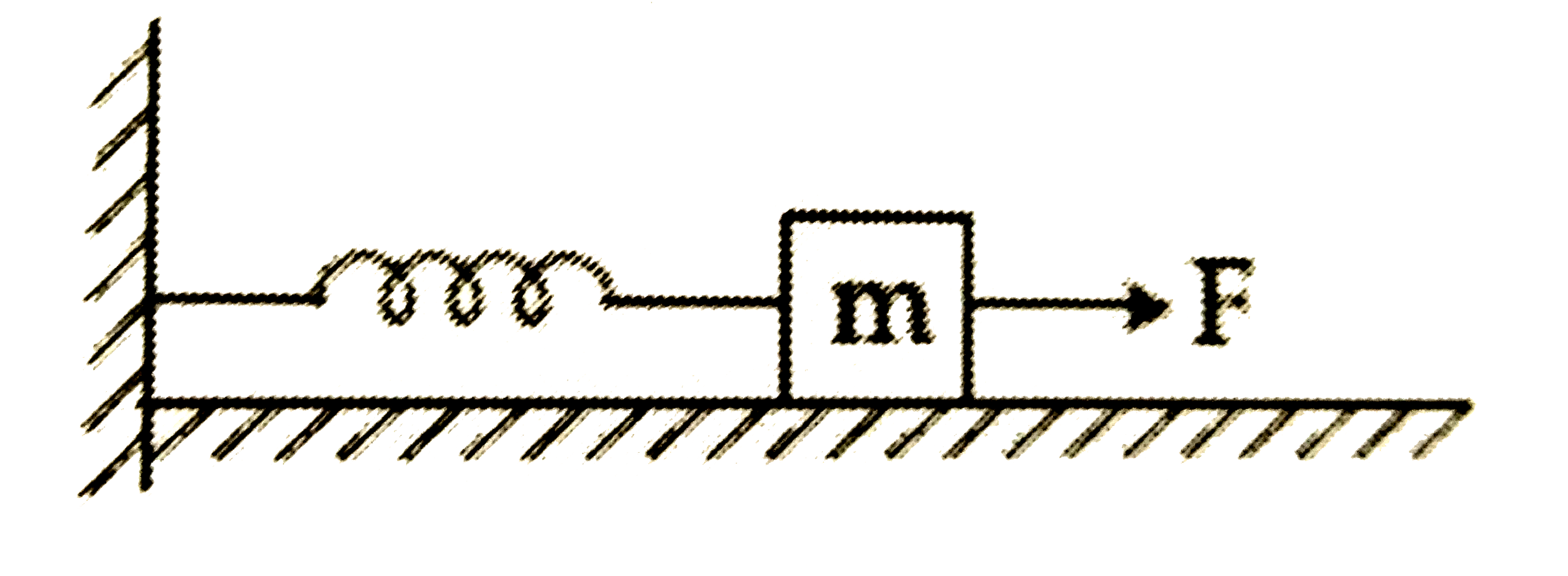 View Solution
View Solution
Knowledge Check
- Question 1 - Select One
A string of negligible mass going over a clamped puley of mass m supports a block of mass Mas shown in the figure. The force on the pulley by the clamp is given
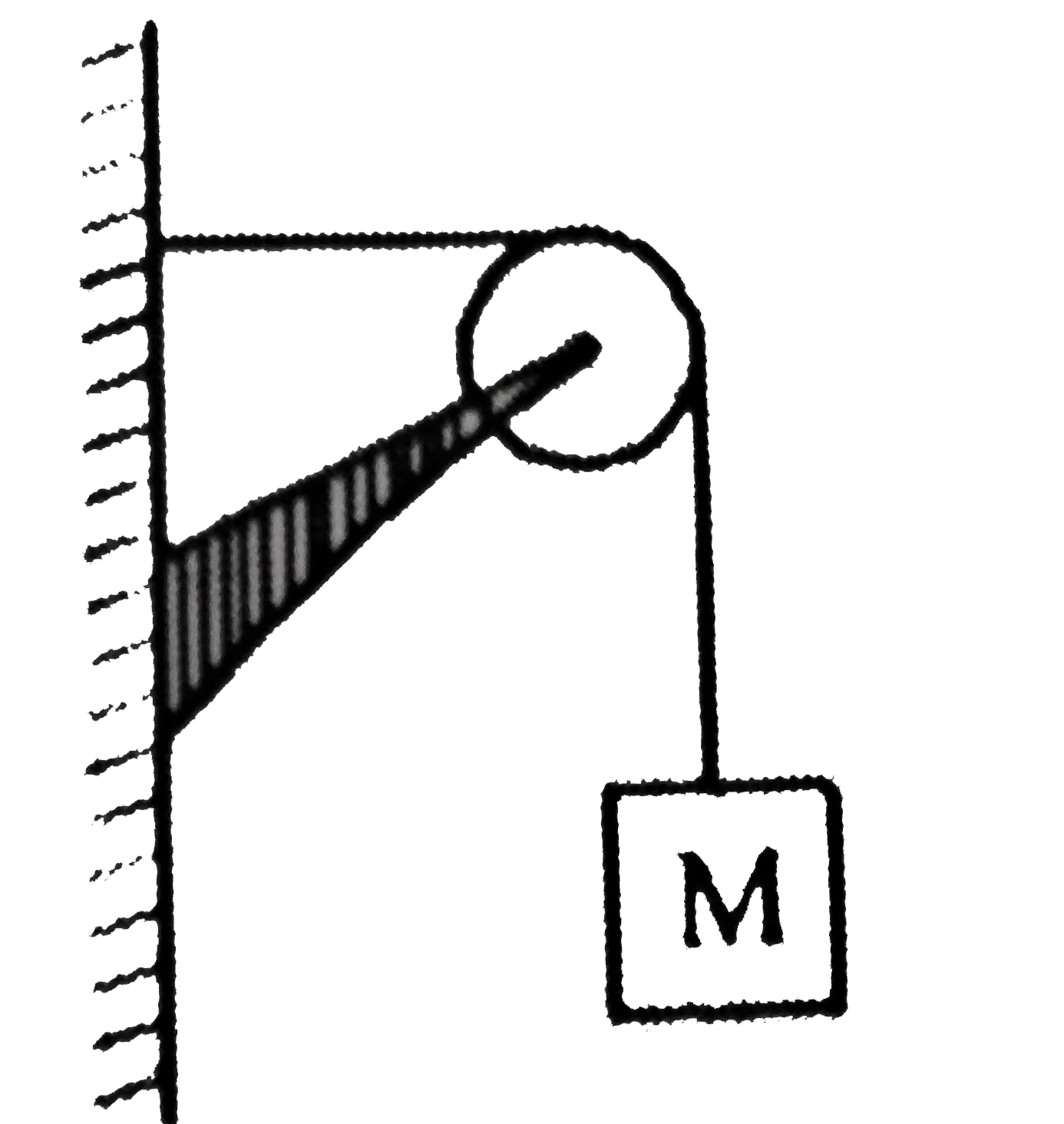 A√2 MgB√2 mgC√(M+m)2+m2gD√(M+m)2+M2g
A√2 MgB√2 mgC√(M+m)2+m2gD√(M+m)2+M2g - Question 2 - Select One
A string of negligible mass going over a clamped pulley of mass m supports a block of mass M as shown in the figure. The force on the pulley by the clamp is given by
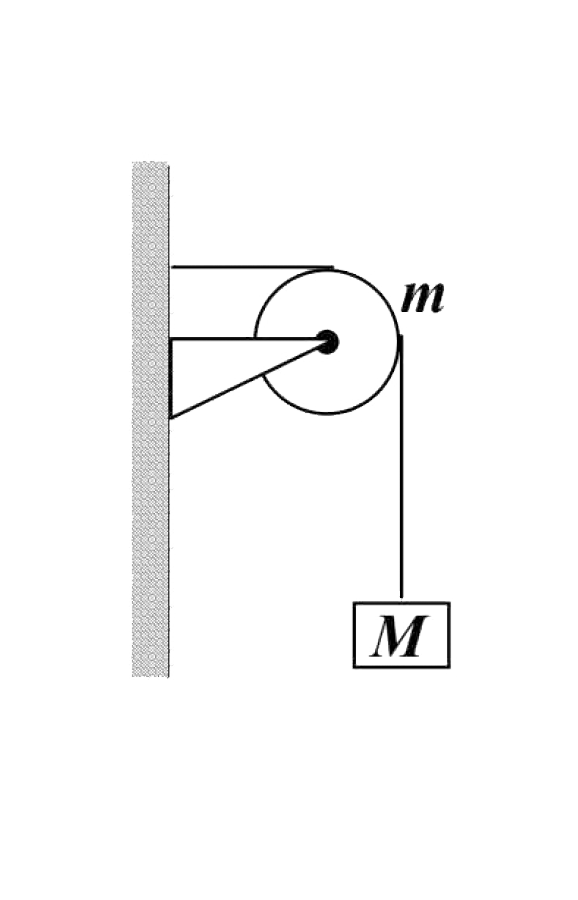 A√2MgB√2mgC√(M+m)2+m2gD√(M+m)2+M2g
A√2MgB√2mgC√(M+m)2+m2gD√(M+m)2+M2g - Question 3 - Select One
A string of negligible mass going over a clamped pulley of mass m supports a block of mass M as shown in the figure. The force on the pulley by the clamp is given by
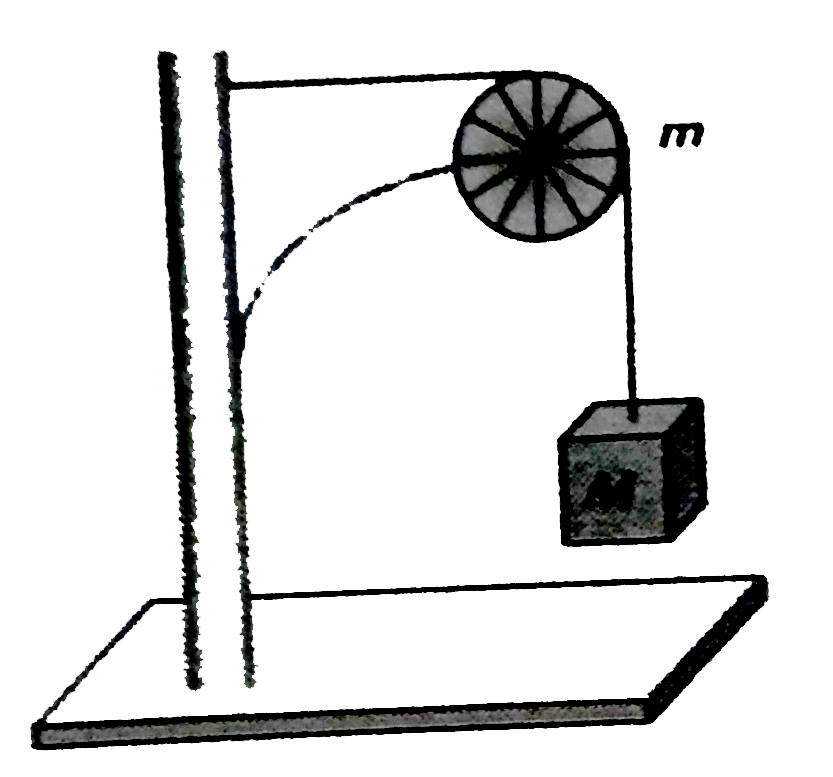 A√2MgB√2mgC√(M+m)2+m2gD√(M+m)2+M2g
A√2MgB√2mgC√(M+m)2+m2gD√(M+m)2+M2g
A block of mass m, lying on a smooth horizontal surface, is attached to a spring (of negligible mass) of spring constant k. The other end of the spring is fixed, as shown in the figure. The block is initally at rest in its equilibrium position. If now the block is pulled withe a constant force F, the maximum speed of the block is :
 View Solution
View SolutionFind the acceleration of the block of mass m in the arrangement shown in the following figures. The masses of the pulleys and the threads, as well as the friction are assumed to be negligible.
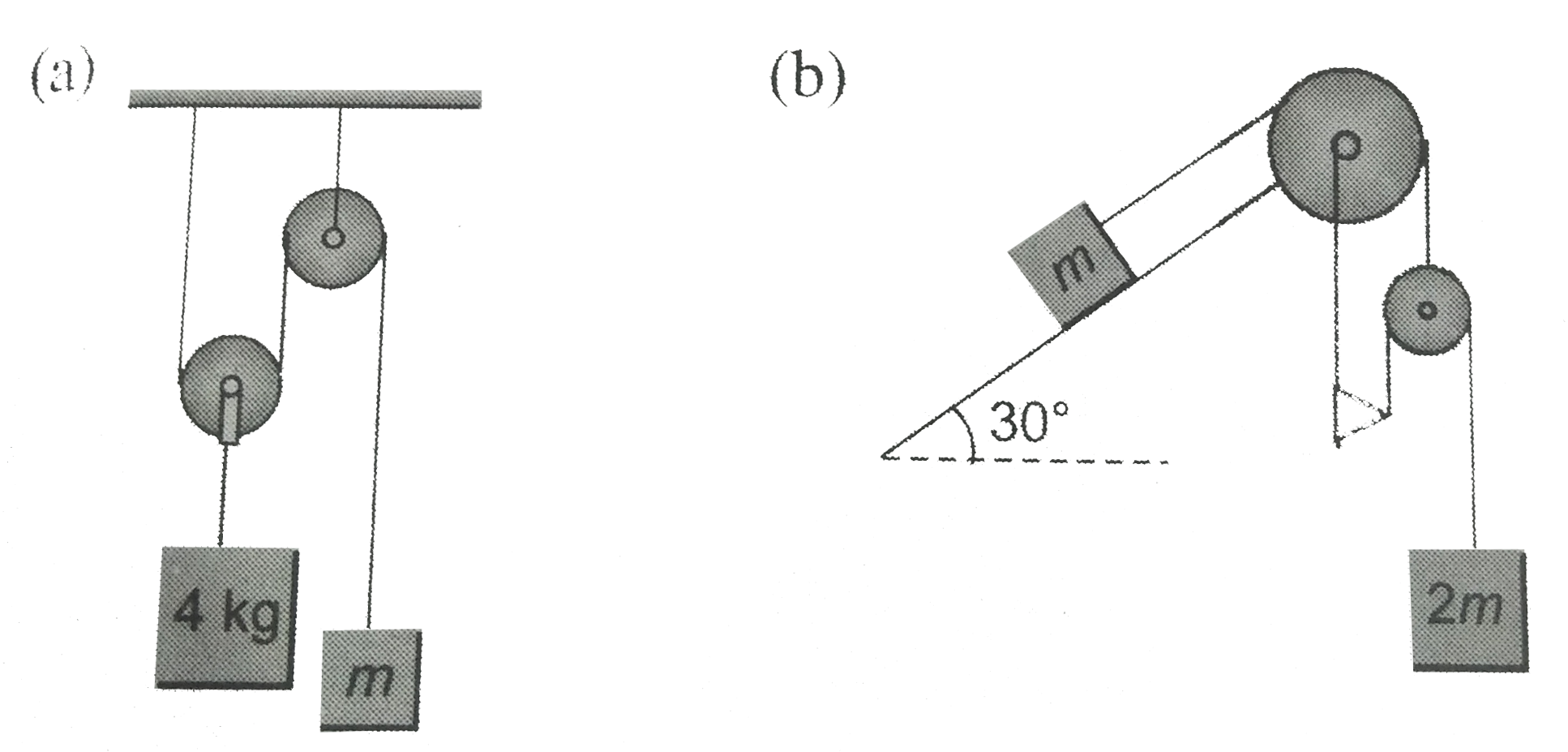 View Solution
View SolutionA block of mass m hangs by means of a string which goes over a pulley of mass m and moment of inertia l, as shown in the diagram. The string does not relative to the pulley. Find the frequency of small oscillations.
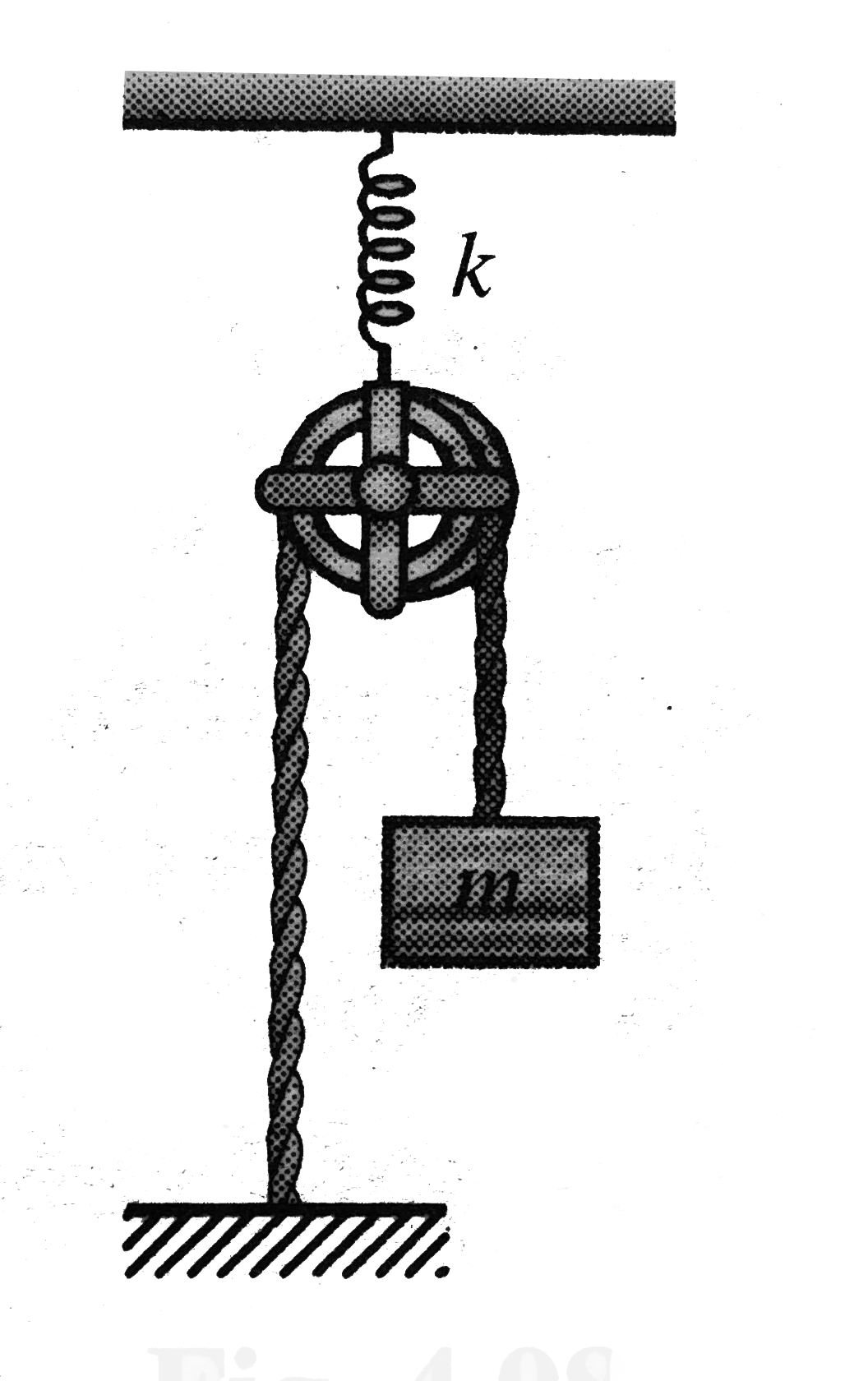 View Solution
View SolutionTwo blocks of masses 2m and m are connected by a light string going over a pulley of mass 2m and radius R as shown in the figure. The system is released from rest. Find the angular momentum of system when the mass 2m has descended through a height h. Assume no slipping.
 View Solution
View SolutionTwo blocks of masses M1=4 kg and M2=6kg are connected by a string of negligible mass passing over a frictionless pulley as shown in the figure below. The coefficient of friction between the block M1 and the horizontal surface is 0.4. when the system is released, the masses M1 and M2 start accelrating. What additional mass m should be placed over M1 so that the masses (M1+m) slide with a uniform speed?
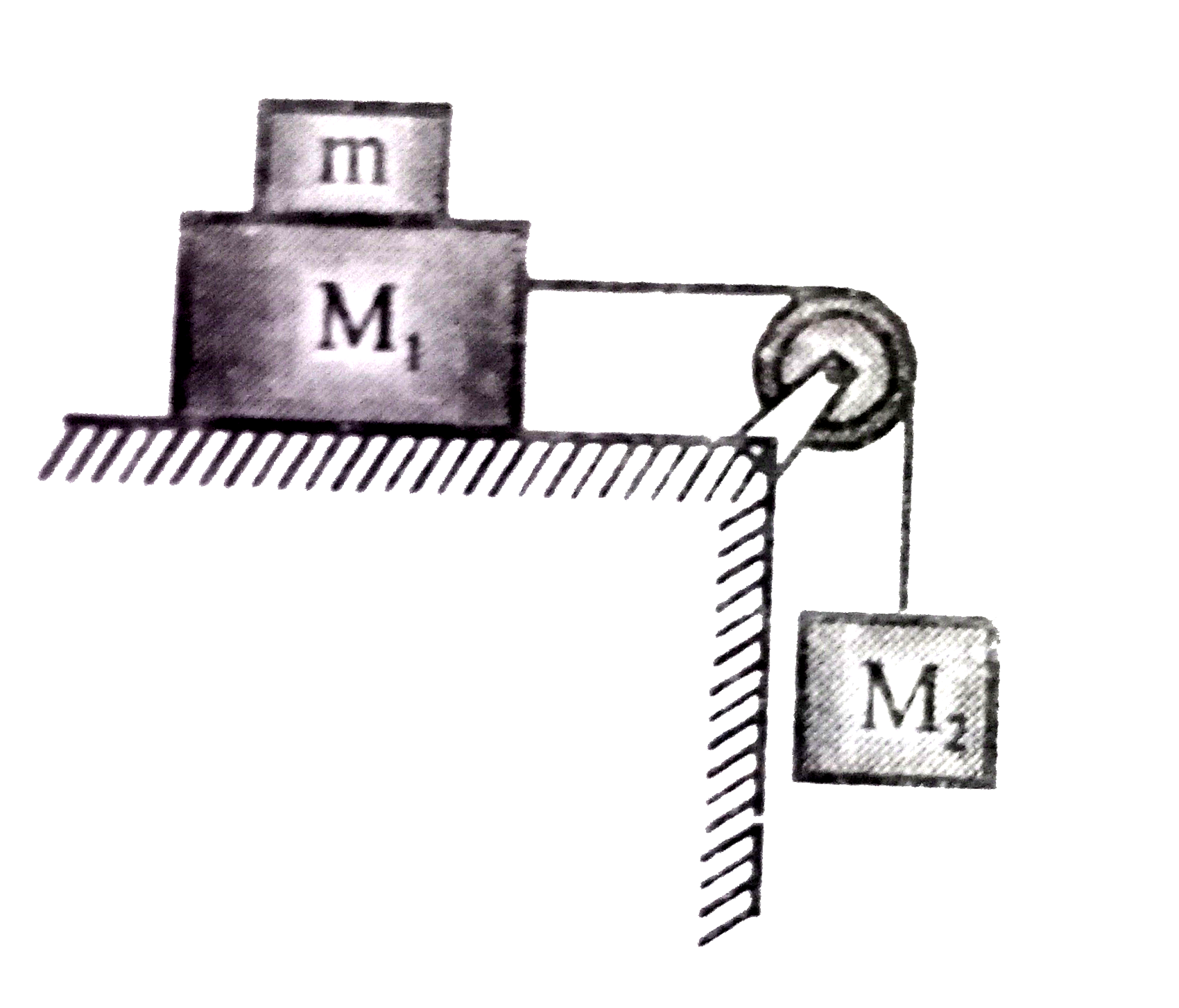 View Solution
View Solution

